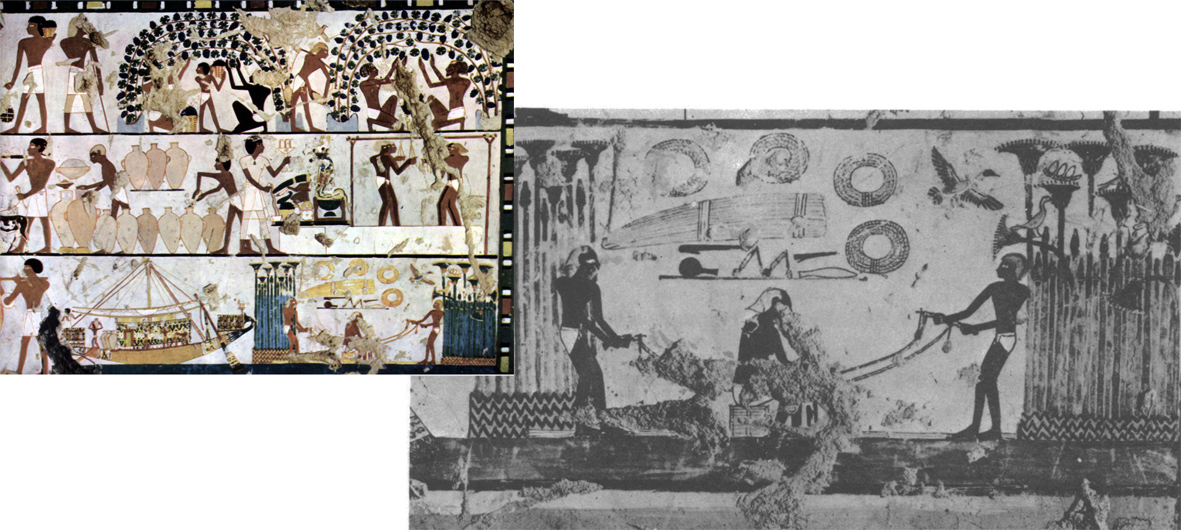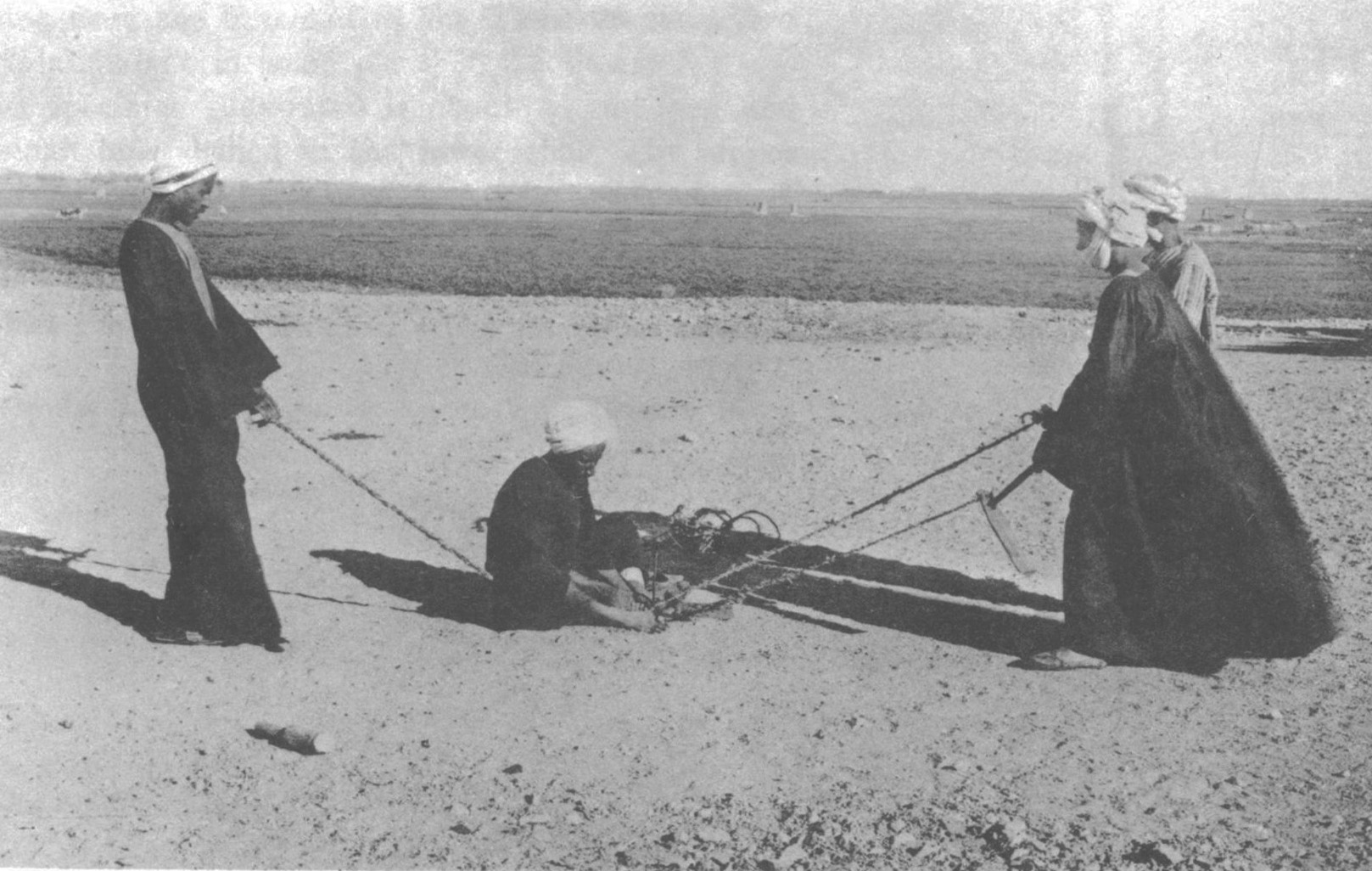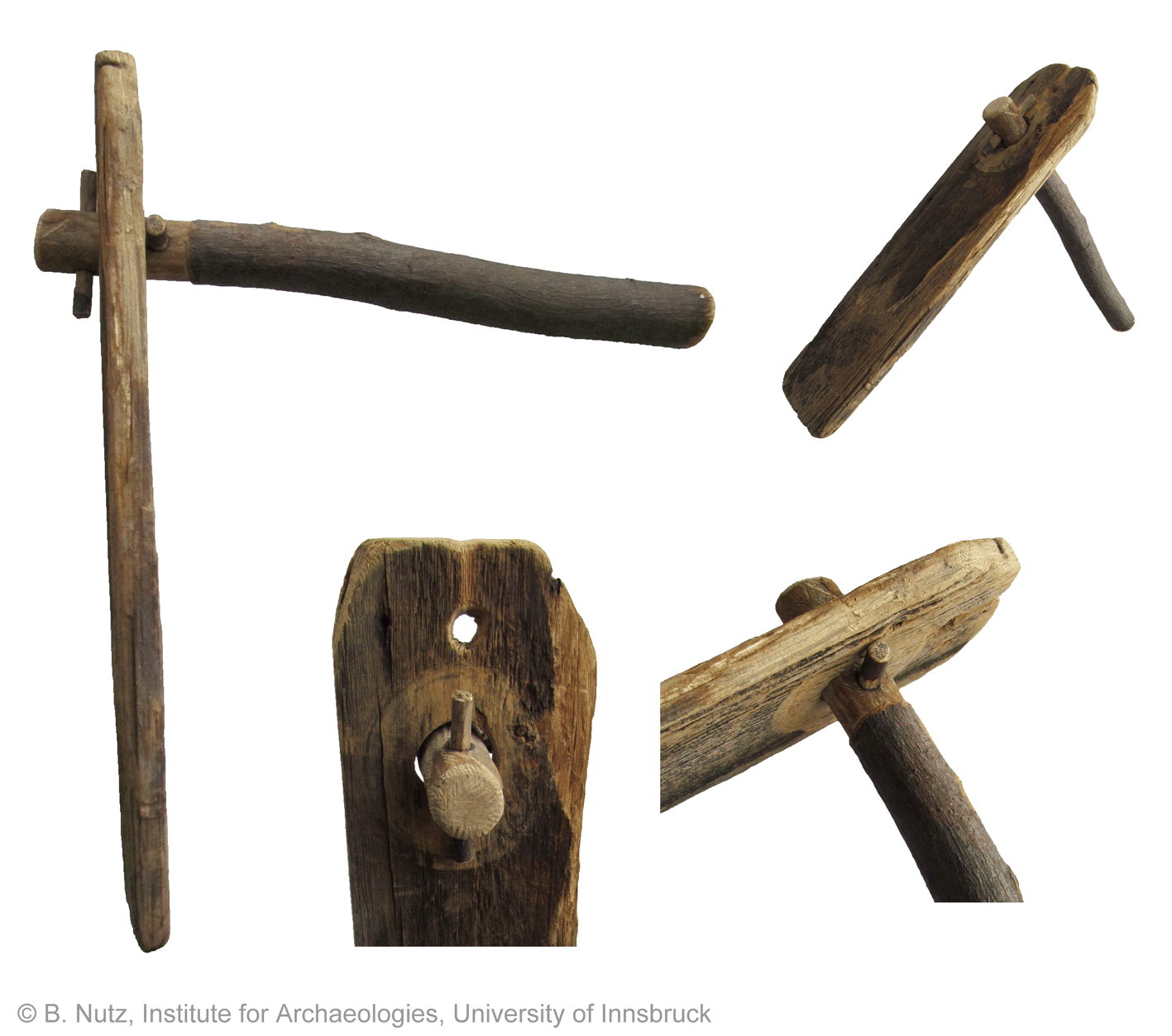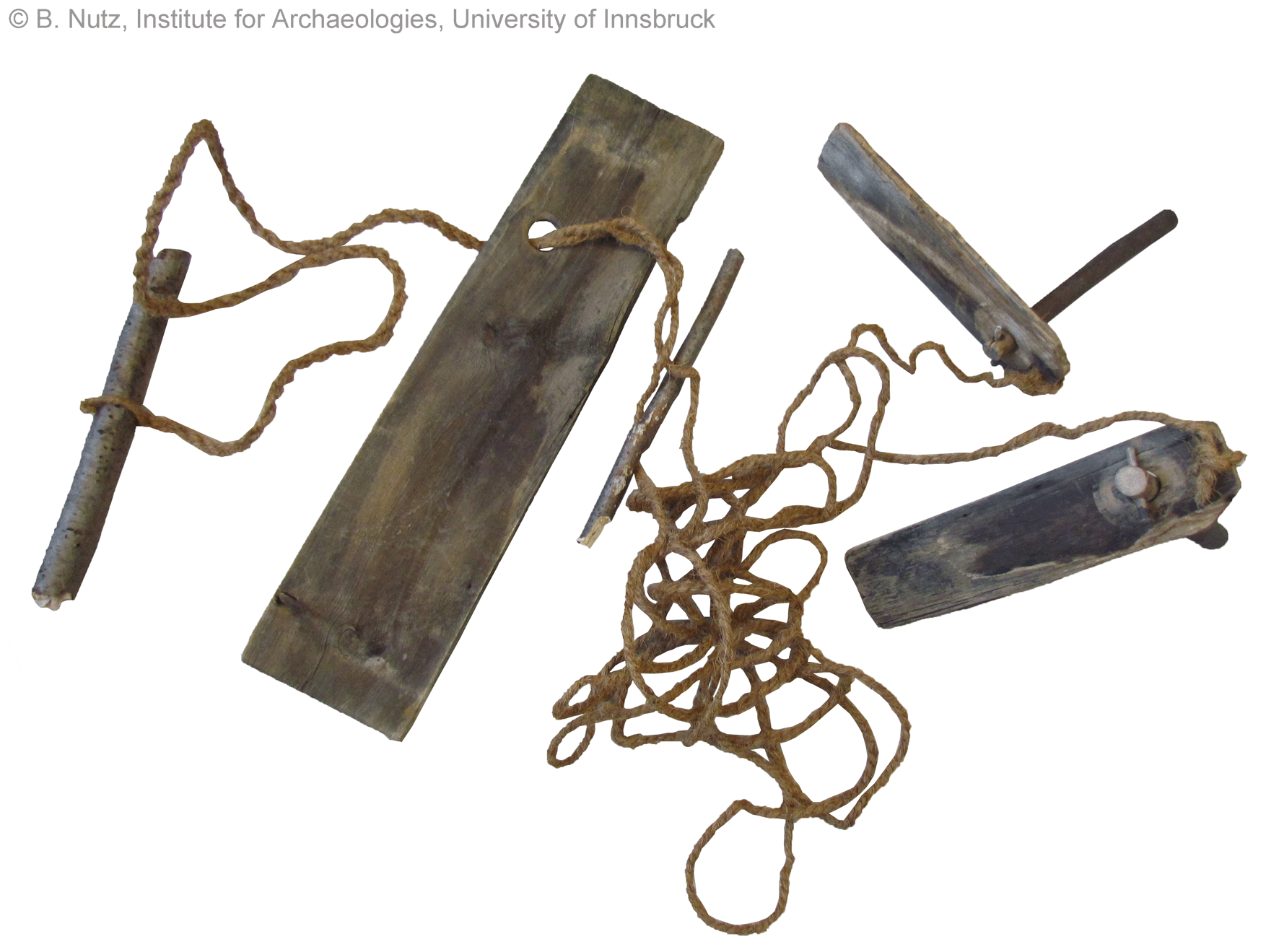Projects and Science
Spindle typology
Rope making in Egypt
ABT
Since pharaonic times in Egypt ropes are made in a special way. A wall painting in tomb no. 2611 (tomb of Khaemwese) in Dra Abu el-Naga, Thebes, from the time of Tuthmosis IV (18th Dynasty, New Kingdom, about 1397-1388 BC) shows three men at work beside a papyrus swamp. The figure on the right side of the group of rope-makers is twisting two separate strands of the rope and is holding a tool used for this purpose in each hand (rope spinner). The middle figure, sitting on a rush box or chair should hold an upright rod of wood or metal between the two strands which are to be twisted together. Unfortunately, a large part of this figure is damaged. The man behind the seated figure holds the rope tight. Above the workers there are four coils of finished rope neatly tied up, and also a bundle of papyrus steins cut and bound together in two places ready to be made into rope.
The group of six tools below is of particular interest, and includes everything that is used in the production of rope. First, there is a species of marline-spike used in splicing and also to put between two strands when they are being twisted together. Below is a mallet used for beating the papyrus stems after they had been soaked in water to make them sufficiently pliable to be twisted. Next to these are two tools for twisting the separate strands of rope which are of much the same form as those employed in Egypt till the 20th century, but with the addition of a heavy ball at the end which assisted with its momentum. To the right of these is another marline-spike somewhat similar to the first (but smaller), and lastly a knife which was probably used for cutting down the reeds.
A photo from the first quarter of the 20th century shows a similar scene. Egyptian fellahin make a rope with an almost identical method. The fellah in the center of the image has an iron rod inserted vertically into the ground and is holding a piece of wood horizontally between the two strands that are twisted together. This additional piece of wood is used only for thick ropes and not for finer strands that require only the vertical rod.
In the scene from the tomb the man twists the strands by holding a rope spinner in each hand. He has to rotate both spinners in the same direction, which requires considerably more skill than is at first apparent. The modern Egyptians always employed two men for this purpose (as seen in the photo). Nowadays ropes are no longer made of papyrus but are manufactured from coconut and palm fibers.
Similar rope making methods can also be found in other countries. For example in America.


From: Ernest Mackay, Note on a new tomb (No. 260) at Dra Abu´l Naga, Thebes. In: The Journal of Egyptian Archaeology 3, 1916, pp. 125-126. JSTOR
See also:
Mohammed Nasr, The Theban Tomb of Khaemwese in Dra Abu el-Naga. In: Studien zur Ägyptischen Kultur 15, 1988, 233-242.
Emily Teeter, Techniques and Terminology of Rope-Making in Ancient Egypt. In: The Journal of Egyptian Archaeology 73, 1987, 71-77. JSTOR

Length of blade: 35 cm, length of the handle: 28cm. The device is used similar to a ratchet2. One end of the strand to be twisted is threaded through the hole in the blade and fastened. The blade is rotated around the handle and the fibers are twisted firmly. Reproduced in 2014 by Ahmad Awad.

Two rope spinners, each with a thinner strand both of which are twisted in the same direction by two workers. The thicker rope is formed by a rotation in the opposite direction. In order to make the rope regular the two cords are passed through the hole in the board while using a wooden or iron rod to regulate the rotation. This is the task of the seated worker in the middle. At the end the fourth worker holds the rope tensioned with the help of another rod. This tool was reproduced in 2014 by Ahmad Awad, who, till about 40 years ago, still manufactured ropes in this way.
Modern Arab names
المجدلة = AL MAGDALA (the rope – rope making tool)
المجادل = AL MAGADEL (rope spinner. Plural, because at least two spinners are needed)
الحبل = AL HABL (the rope, the cord)
1 manchmal auch mit Grab Nr. 260 verwechselt oder gleichgesetzt, da sich beide Gräber einen Treppenaufgang teilen.
2 A ratchet, also called a noisemaker (or, when used in Judaism, a gragger or grogger (etymologically from Yiddish: גראַגער) or ra'ashan (Hebrew: רעשן)), is an orchestral musical instrument played by percussionists. Operating on the principle of the ratchet device, a gearwheel and a stiff board is mounted on a handle, which rotates freely.